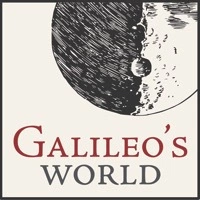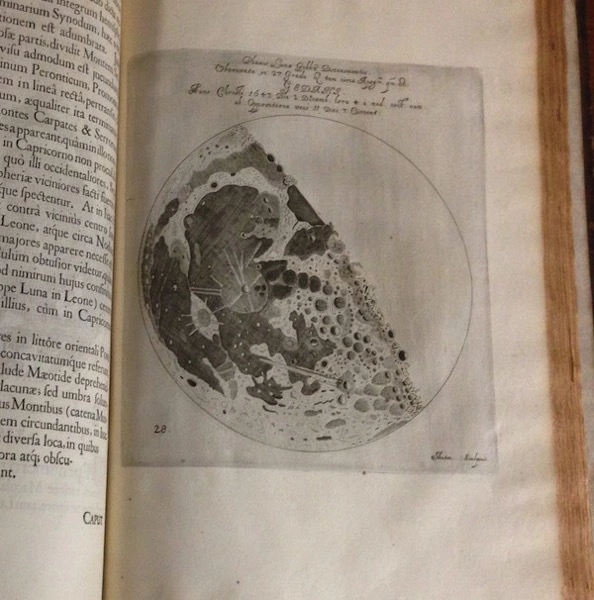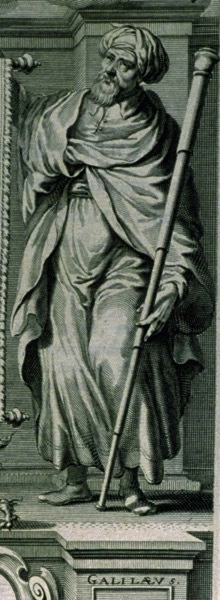by Kerry Magruder
 The Galileo’s World exhibition brings worlds together, connecting the world of Galileo with the world of OU during the University’s 125th anniversary.
The Galileo’s World exhibition brings worlds together, connecting the world of Galileo with the world of OU during the University’s 125th anniversary.
Beginning in August, 2015, the Galileo’s World exhibition will offer a once-in-a-lifetime opportunity to view a complete set of first editions of Galileo’s printed works. Four of the OU copies contain Galileo’s own handwriting. They will be joined by 300 matchless rare books and manuscripts and finely-crafted replicas of historical instruments, some provided by the Museo Galileo in Florence.
in Florence.
Consider these three stories of how Galileo’s World will bring worlds together:

Johann Schreck was a friend of Galileo’s who assisted him during his telescopic observations. A few years later, Schreck went to China, where he wrote a work on engineering in Chinese. The OU copy incorporates Japanese revisions as well. OU students will discover much more to this story in the gallery on Galileo and China, where they will connect Galileo’s world with Chinese and Asian aspects of University life today.

Just as Galileo’s World brings together the worlds of OU and east Asia, so with the Americas. In the most important early natural history of America to be printed in Europe, Francesco Hernandez reported the plant and medical knowledge of the Aztecs of central Mexico. This work was regarded with such interest that Galileo and his colleagues in the Academy of the Lynx worked to finally publish it in 1651. Every OU student in a STEM field today will appreciate discovering that European progress in the life sciences, as far back as the scientific revolution, directly depended upon the natural knowledge of Native Americans.

Just as Galileo’s World brings together the worlds of Asia and the Americas, so it reaches through time to the Middle Ages and includes the Middle East. Selenographia, a massive book by Johann Hevelius, the leading telescopic observer of the mid-17th century, was the first comprehensive lunar atlas, published less than 40 years after Galileo’s telescopic discoveries.

On the frontispiece, Hevelius celebrates science as the heritage of many cultures. Here, in one of the most impressive works of the scientific revolution, Hevelius portrays Galileo in Middle Eastern dress as a tribute to the tradition of medieval Islamic optics.

These three brief stories show how Galileo’s World brings together worlds as far removed as Asia, America and the Middle East.
Galileo’s World is an “exhibition without walls.” Beginning with Bizzell Memorial Library at the heart of the Norman campus, galleries in each major library, including the Bird Library and the Schusterman Library, will bring together the Norman, Oklahoma City, and Tulsa campuses.
Joint-exhibitions at the National Weather Center, the Fred Jones Jr. Museum of Art and the Sam Noble Oklahoma Museum of Natural History will engage visitors to these renowned museums and research centers.
Thanks to financial assistance provided by the OU Athletic Department, the University has acquired for the Galileo’s World exhibition an original Galileo-related manuscript by Oratio Grassi (1623), a beautiful work relating Renaissance art to Galileo and the telescope (Lorenzo Sirigatti, 1596), and the dialogue on ancient and modern music written by Galileo’s father, Vincenzo Galilei (1581). Coach Galileo will offer advice to the Sooners in a gallery located in Headington Hall, where athletes will strike the poses of the muscle men of Vesalius (1543) instead of only the Heisman trophy.

Galileo’s World will connect every academic program of the University, sustaining a multidisciplinary conversation that brings our worlds together across time and space. A portion of Tuscany was transplanted to the windswept plains of Oklahoma, and now the story of Galileo has become part of every student’s and researcher’s experience at OU. The interconnectedness of science and culture which characterized Galileo’s world, and which connects Galileo’s world to our own day, remains the common heritage of humanity which we explore across the University and beyond Oklahoma to the world.
See galileo.ou.edu and oulynx.org or contact galileo@ou.edu for more information.



Pingback: 46 Years Ago Today: A Galileo-Inspired Banquet at OU’s Symposium in the History of Science | OU History of Science Collections
Pingback: Teaching with Galileo’s World Exhibit, 2015-16 | OU History of Science Collections